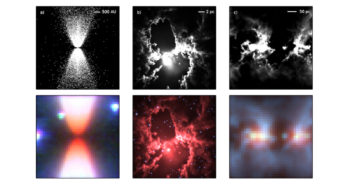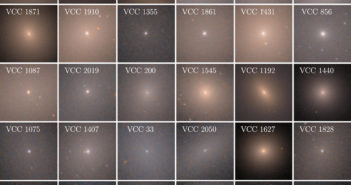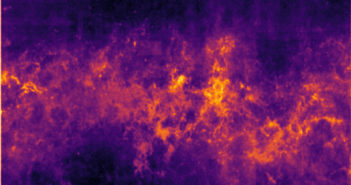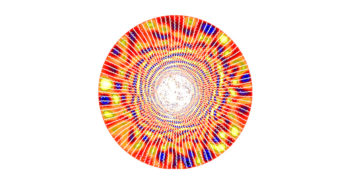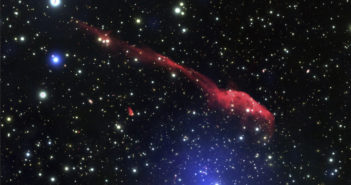
Featured Image: New Detail in the Toothbrush Cluster
This spectacular composite (click here for the full image) reveals the galaxy cluster 1RXS J0603.3+4214, known as the “Toothbrush cluster” due to the shape of its most prominent radio relic. Featured in a recent publication led by Kamlesh Rajpurohit (Thuringian State Observatory, Germany), this image contains new Very Large Array (VLA) 1.5-GHz observations (red) showing the radio emission within the cluster. This is composited with a Chandra view of the X-ray emitting gas of the cluster (blue) and an optical image of the background from Subaru data. The new deep VLA data — totaling 26 hours of observations — provides a detailed look at the complex structure within the Toothbrush relic, revealing enigmatic filaments and twists (see below). This new data will help us to explore the possible merger history of this cluster, which is theorized to have caused the unusual shapes we see today. For more information, check out the original article linked below.
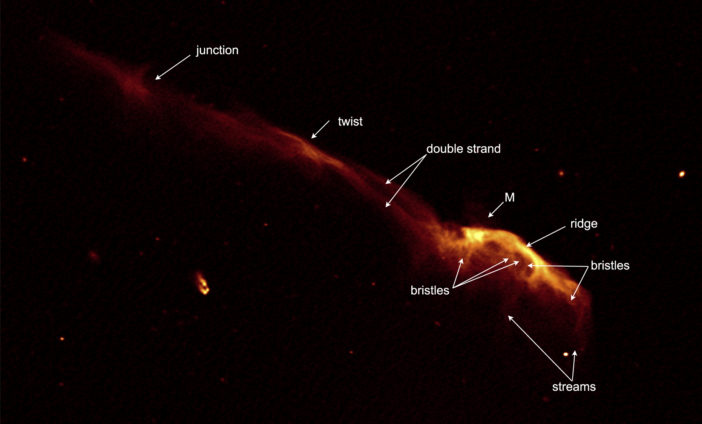
High resolution VLA 1–2 GHz image of the Toothbrush showing the complex, often filamentary structures. [Rajpurohit et al. 2018]
Citation
K. Rajpurohit et al 2018 ApJ 852 65. doi:10.3847/1538-4357/aa9f13


